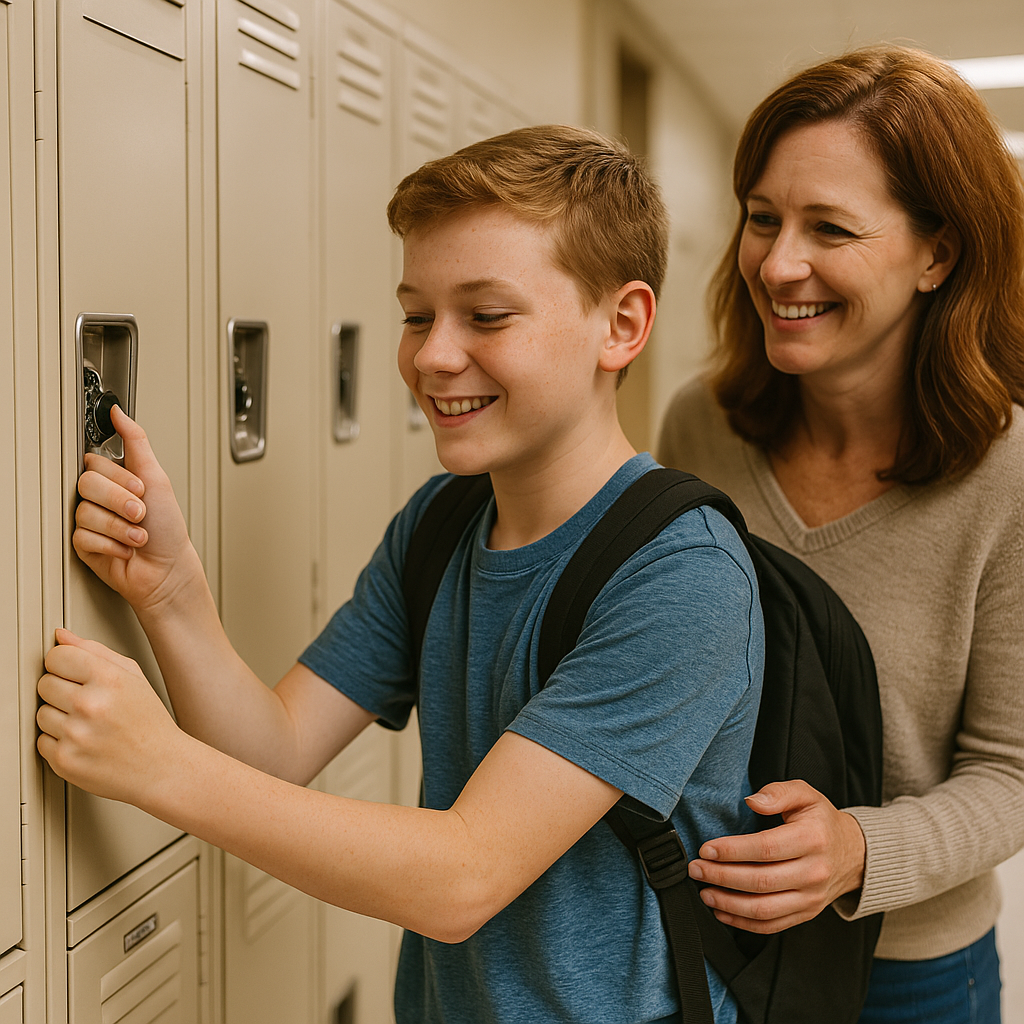
Why Middle School Transitions Can Be Challenging
Moving from elementary school to middle school is a big step for any child. For children on the autism spectrum, this transition can feel especially overwhelming. New classrooms, multiple teachers, lockers, and increased academic expectations may create stress and uncertainty.
Parents in Ellisville and Ballwin often share concerns such as:
- How will my child manage switching classes on time?
- What if they feel anxious in larger, noisier environments?
- Will they be able to handle new social dynamics?
- How can I support their independence with homework and organization?
Applied Behavior Analysis (ABA) helps children and families prepare for these changes with structured strategies that build skills, reduce anxiety, and foster confidence.
How ABA Prepares Children for Middle School
1. Building Organizational Skills
Middle school often requires managing multiple notebooks, folders, and assignments. ABA therapists use tools like:
- Color-coded folders for each subject
- Visual checklists for packing backpacks
- Reinforcement for completing homework on time
2. Practicing Transitions Between Classes
Children may rehearse walking through hallways or following a bell schedule in therapy. Role-playing helps them practice moving calmly and on time.
3. Supporting Social Skills
Friendship dynamics shift in middle school. ABA supports children in learning how to:
- Initiate conversations
- Join group activities
- Handle peer conflicts with calm strategies
4. Managing Anxiety in New Environments
ABA helps children cope with noisy cafeterias, crowded hallways, or new routines. Coping tools may include deep-breathing strategies, sensory breaks, or social stories explaining what to expect.
5. Encouraging Independence
Children gain confidence by learning to take responsibility for homework, lockers, and schedules—skills that are reinforced step by step through ABA.
Real-Life Example: Transitioning in Ballwin
Aiden, a 12-year-old from Ballwin, was nervous about moving to Crestview Middle School. He worried about getting lost between classes and handling more homework.
His ABA therapist introduced a practice “locker” at home to rehearse opening and closing it. A color-coded system for folders helped Aiden organize assignments. Role-play prepared him for noisy hallways and new teachers.
By the first semester, Aiden successfully navigated his schedule, managed his homework, and began making new friends. His parents described the process as “life-changing” for both Aiden and the family.
Local Opportunities in Ellisville and Ballwin to Practice Skills
Families can use community settings to prepare children for middle school routines:
- Ballwin Parks and Recreation Programs: Encourage teamwork and social practice in structured group activities.
- Ellisville Elementary to Crestview Middle transition events: Opportunities to tour schools and practice navigating hallways.
- St. Louis County Libraries (Ellisville Branch): A great setting for practicing organization with borrowed books and quiet study.
- Community sports programs: Team participation builds patience, flexibility, and peer interaction.
- Local restaurants: Perfect for practicing ordering independently and managing social situations in public.
These real-world experiences help bridge therapy and daily life.
Parent Tips for Supporting Middle School Transitions
1. Visit the School Early
Tour classrooms, hallways, and lockers before the first day. Familiarity reduces anxiety.
2. Create a Morning Routine
Consistency at home helps children feel calm and prepared before heading to school.
3. Role-Play Social Scenarios
Practice conversations, joining groups, or asking for help to boost confidence in peer interactions.
4. Use Visual Schedules at Home
Create a simple chart showing “pack backpack → homework → snack → relax” to reinforce organization.
5. Communicate with Teachers
Share your child’s strengths and challenges with teachers so supports can be put in place from the start.
Why Middle School Preparation Builds Lifelong Skills
Preparing children for middle school does more than ease one transition—it sets the stage for lifelong independence.
- At school: Organization, social confidence, and self-regulation support academic success.
- At home: Daily routines run more smoothly when children take responsibility.
- In the community: Independence in public settings grows as confidence builds.
- For adulthood: Skills like planning, communication, and coping prepare children for high school, college, and beyond.
Long-Term Benefits for Families
Parents in Ellisville and Ballwin often describe middle school preparation with ABA as transformative. Instead of dreading the transition, families feel supported and confident. Children grow in independence, while parents gain peace of mind knowing their child has tools to thrive.
FAQ
Q1: When should we start preparing for middle school?
Ideally, begin months before the transition to allow for practice and confidence-building.
Q2: Can ABA help with homework routines?
Yes—therapists break homework into manageable steps, reinforce focus, and build independence.
Q3: What if my child struggles with new teachers?
ABA helps children role-play respectful communication and cope with different teaching styles.
Q4: How do I support locker routines?
Practice at home with a model lock or checklist to build familiarity and reduce stress.
Q5: Do middle school skills carry into high school?
Yes—organization, independence, and social strategies build a foundation for future transitions.
